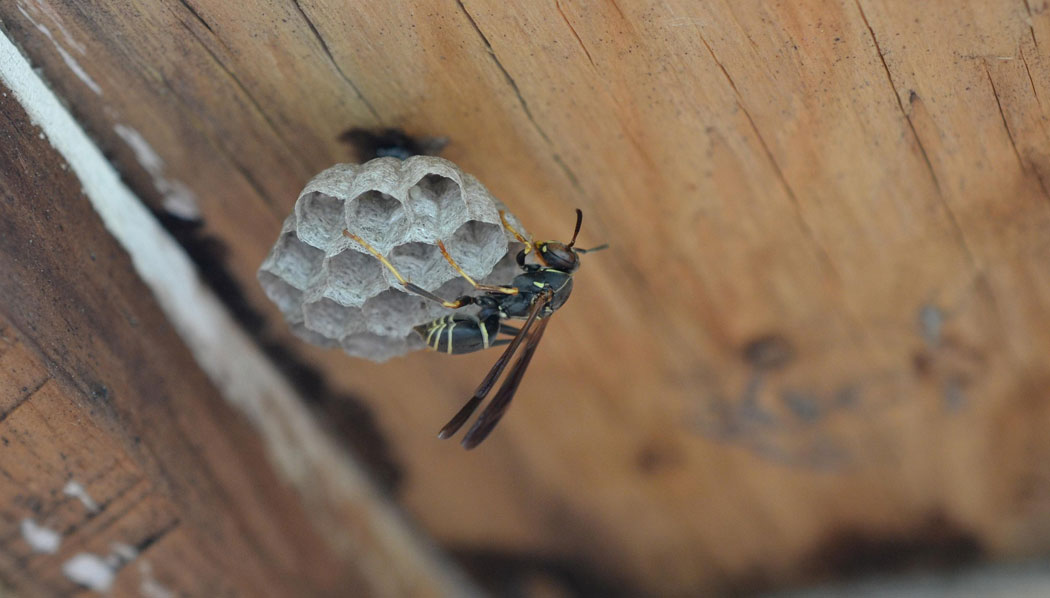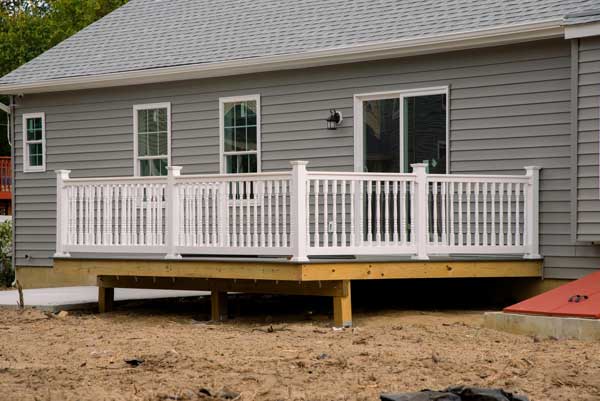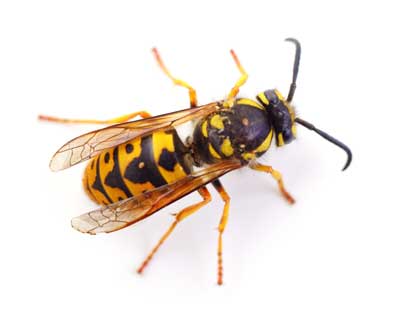Finding a wasp nest under deck boards isn’t just inconvenient; it can be a serious safety concern. Wasps are territorial by nature and prefer to build nests in quiet, sheltered spots. The space beneath your decking offers ideal conditions: protected from the elements, rarely disturbed, and often located near food sources like bins or fallen fruit. That makes it one of the most common nesting sites around Irish homes during spring and summer.
If a queen wasp finds her way under your deck, she’ll begin building a small nest using chewed wood pulp. Over the weeks, this nest can expand quickly, bringing the risk of stings, disruption to outdoor spaces, and danger to children or pets. In this guide, we’ll cover why wasps choose decking areas, how to prevent them from nesting there, and what steps to take if a wasp nest under the deck is already present.

Why Wasps Target Decking Spaces
Wasps look for secure, dry locations to start their colonies. A raised timber deck offers both shelter and seclusion, especially during the spring and summer months when nesting activity peaks. Gaps between boards, structural cavities, and even the ground underneath all create appealing nesting sites. Similar nesting behaviour is also common in areas like a wasp nest in soffit or a wasp nest in roof tiles, where the structure provides hidden access and protection.
If you also have rubbish bins nearby, pet food left outside, or fallen fruit in the garden, you’re unintentionally increasing the risk of a wasp nest under deck areas. Once a queen wasp finds a suitable space, she begins to build a small nest out of chewed wood pulp. Over the following weeks, the colony expands, and so does the risk to anyone using the space.
How to Prevent a Wasp Nest Under Deck Areas
To reduce the chance of wasps settling in, follow these proven prevention steps:
-
- Seal cracks and openings: Use caulk, steel mesh, or wood filler to close off gaps under and between deck boards. Even small holes can be enough for wasps to enter and start building.
- Keep the space clean: Wasps are drawn to protein and sugar. After outdoor meals or barbecues, clean surfaces thoroughly and remove crumbs or spills that may attract them.
- Manage bins and food waste: Rubbish should always be kept in sealed bins away from the deck. This not only discourages a wasp nest under deck areas but also reduces interest from other pests like ants and rodents.
- Check the soil below: If your deck is raised over bare earth, inspect for small burrows or holes. Yellow jackets are known to build nests underground, commonly referred to as a ground wasp nest, and disturbed soil can be a warning sign. Fill and compact these spaces to eliminate nesting options.
These steps don’t require much effort but can make a significant difference over time.
Natural Deterrents and Decking Maintenance
Along with regular cleaning and sealing, natural deterrents can further reduce the chances of a wasp nest under deck structures:
-
- Essential oil sprays: Scents like peppermint, eucalyptus, clove, and citronella are known to repel wasps. A diluted spray applied under the deck can discourage them from nesting. These solutions are part of a broader natural wasp removal approach that avoids harmful chemicals and protects pollinators.
- Herb placement: Plant deterrent herbs such as mint, basil, or lemongrass in pots near the deck. They offer a mild but continuous deterrent throughout the warmer months.
- Decoy nests: Wasps tend to avoid nesting near existing colonies. Hanging a fake nest beneath your deck may prevent new ones from forming.
- Timber care: Cracked or rotting wood creates more spaces for pests to exploit. Sand down rough boards, reseal exposed areas and inspect your decking each season. Healthy timber is less attractive to wasps and other insects.
Prevention isn’t just about chemicals; it’s about creating an environment that discourages wasps from settling in the first place.
What to Do If You Discover a Nest
If you already have a wasp nest under deck areas, it’s important not to disturb it. Wasps become extremely aggressive when defending their colony, and stings can be dangerous, especially to children, pets, or those with allergies.
-
- Do not spray or hit the nest: DIY attempts often make the problem worse by provoking an attack.
- Block off the area: Restrict access to the deck and keep people and pets well away.
- Call a professional: A licensed pest control service can assess the situation and remove the nest safely, especially if it’s expanded into adjoining areas like a wasp nest in vent or even a wasp nest in the wall, using equipment and protective gear designed for the task. Professionals can also advise on how to prevent wasps from returning.
Even a small nest can grow rapidly, so don’t wait to act if you notice signs of activity.

Keeping Wasps Out from Under Your Deck
Preventing a wasp nest under deck spaces starts with early action and regular upkeep. Seal gaps, eliminate food sources, check the soil beneath, and consider natural deterrents. Maintaining a clean, well-kept deck is one of the most effective ways to stop wasps from settling in and gives you peace of mind all season long.
contact form
Need Help with a Wasp Nest Under Your Deck?
If you’ve noticed a wasp nest under deck boards or nearby soil, don’t leave it to chance. Wasps can grow aggressive quickly and pose a risk to children, pets, and visitors.
For safe, same-day wasp nest removal, call us on 087 254 2839 or book online. We’ll eliminate the nest and help prevent future infestations safely and discreetly.
